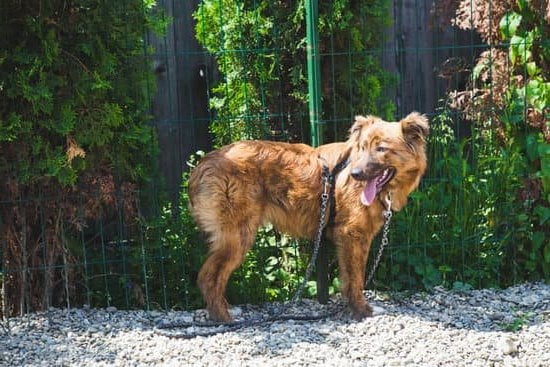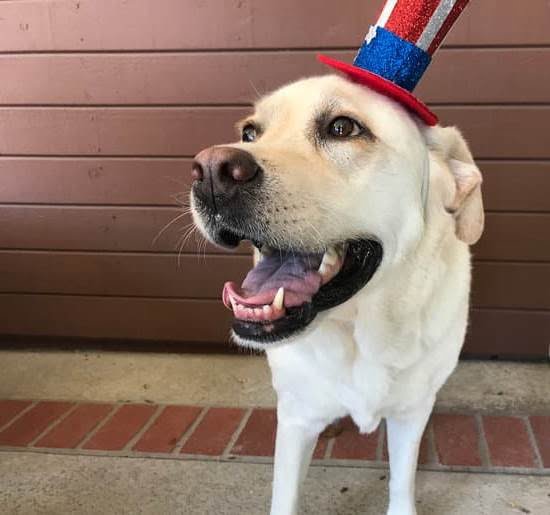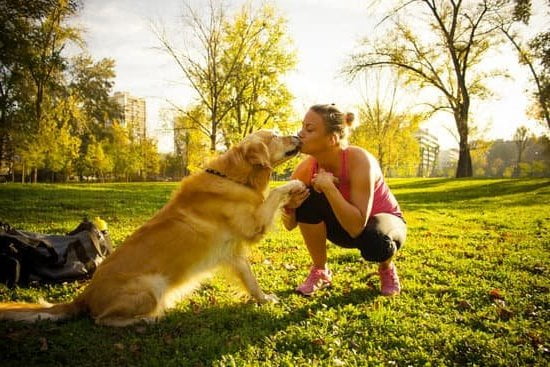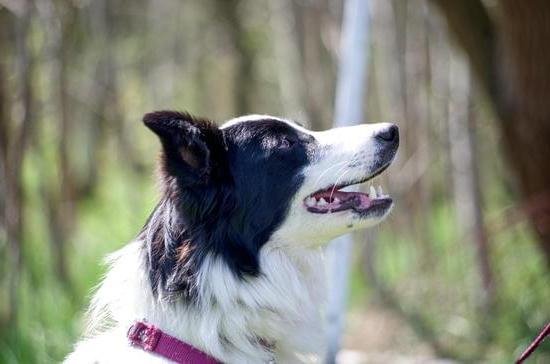As our furry companions age, the need for training and guidance doesn’t diminish, but rather becomes increasingly important to ensure their well-being and quality of life. In this article, we will explore the essential aspects of how to train older dogs, debunking common myths about their ability to learn new behaviors. Contrary to popular belief, older dogs are still capable of picking up new skills and behaviors with the right approach and mindset.
While training an older dog may present unique challenges compared to working with a puppy, understanding the psychology behind aging can greatly enhance the training process. Factors such as physical limitations, past experiences, and overall health can influence the way older dogs respond to training methods. By acknowledging these differences and adapting your approach accordingly, you can effectively teach your senior companion new tricks and behaviors.
One key step in training an older dog is assessing their current behavior and abilities. By taking stock of your dog’s strengths, weaknesses, and habits, you can tailor your training plan to suit their individual needs.
Setting realistic goals and expectations is crucial in this process, as it allows for incremental progress and prevents frustration for both you and your furry friend. By implementing positive reinforcement techniques, practicing patience, consistency, and making necessary adaptations to traditional training methods, you can pave the way for a successful training journey with your older dog.
Understanding the Psychology of Older Dogs
As dogs age, their behavior and learning capabilities may change, making training an older dog a unique experience. Understanding the psychology of older dogs is crucial in tailoring effective training methods. One key factor to consider is that older dogs may have established behaviors and habits that can be challenging to modify. Unlike puppies who are more malleable, older dogs may require a different approach to training that takes into account their previous experiences and conditioning.
Changes in Cognitive Function
Older dogs may experience cognitive decline as they age, which can affect their ability to learn new commands or behaviors. It’s important to be patient and understanding when training an older dog, as they may need more time to process information.
Adjusting your training techniques to accommodate any cognitive changes can help set your senior pup up for success. Using clear cues and consistent reinforcement can aid in overcoming any cognitive challenges your older dog may face during training sessions.
Physical Limitations
Another aspect of the psychology of older dogs to consider is their physical limitations. As dogs age, they may develop arthritis or other health conditions that can impact their mobility or comfort levels during training. It’s essential to take these physical limitations into account when designing a training regimen for your senior dog.
Opting for low-impact exercises, using gentle encouragement, and providing ample rest breaks can help maintain your older dog’s enthusiasm for learning new skills. By being mindful of your dog’s physical well-being, you can create a training plan that is both effective and comfortable for them.
Emotional Factors
Additionally, emotional factors play a significant role in the psychology of older dogs. Senior dogs may experience anxiety or stress due to changes in their environment or routine, which can affect their receptiveness to training. Building trust and establishing a positive bond with your older dog through patience and consistency is key to overcoming any emotional barriers to learning.
Creating a calm and supportive training environment can help alleviate any anxieties your senior pup may have about the training process. By recognizing and addressing these emotional factors, you can create a strong foundation for successful training sessions with your older dog.
Understanding the psychology of older dogs is essential for developing an effective training strategy that meets their individual needs and abilities. By taking into account cognitive function, physical limitations, and emotional well-being, you can tailor your approach to ensure a positive and rewarding experience for both you and your senior canine companion as you embark on the journey of how-to-train-older-dog initiatives together.
Assessing Your Older Dog’s Behavior and Abilities
When it comes to training older dogs, one of the key steps is to assess their behavior and physical abilities. Unlike puppies, older dogs may have developed certain habits or behaviors over the years that need to be addressed during training.
Observing your older dog’s current behavior can give you valuable insights into areas that may require focus during training sessions. Additionally, it is crucial to evaluate your dog’s physical health and any limitations that may affect their ability to learn new commands or tricks.
Assessing your older dog’s behavior also involves understanding their temperament and personality. Some older dogs may be more set in their ways, while others might be more eager to learn new things.
By taking the time to observe how your dog responds to different stimuli and commands, you can tailor your training approach to fit their specific needs. For example, a shy or anxious older dog may require a gentler approach with positive reinforcement techniques, whereas a more energetic dog may benefit from interactive training exercises.
Furthermore, assessing your older dog’s abilities can help you set realistic goals for their training. Understanding what commands they already know, as well as any physical limitations they may have, will allow you to create a training plan that is both effective and safe for your furry companion. Remember, every dog is unique, so it is essential to adapt your training methods to suit the individual needs of your older dog.
| Behavior Assessment | Physical Abilities Evaluation |
|---|---|
| Observe current behavior for insights | Evaluate physical health and limitations |
| Consider temperament and personality | Understand abilities for setting goals |
Setting Realistic Goals and Expectations
Understanding the Psychology of Older Dogs
Older dogs may have different learning capabilities compared to puppies, but they are still capable of learning new things. It’s essential to recognize that older dogs may have physical limitations or health issues that can affect their ability to participate in certain training activities. By understanding your older dog’s specific needs and abilities, you can tailor your training approach to ensure that it is both effective and safe for them.
Assessing Your Older Dog’s Behavior and Abilities
Before embarking on a training program with your older dog, take the time to assess their current behavior and physical abilities. This evaluation will help you identify areas where your dog may need extra support or modifications in training techniques.
By recognizing your dog’s strengths and weaknesses, you can set realistic goals that take into account their individual characteristics. Additionally, consulting with a veterinarian before starting any training regimen can provide valuable insights into any underlying health concerns that may impact your dog’s ability to learn new behaviors.
Positive Reinforcement Techniques
When implementing positive reinforcement training methods for older dogs, it is essential to be consistent and patient. Older dogs may take longer to learn new commands compared to younger dogs, so it is important not to rush the training process. Celebrate small victories and progress made by your older dog to keep them motivated and engaged in the training sessions.
One key aspect of positive reinforcement when training older dogs is timing. It is crucial to reward your older dog immediately after they exhibit the desired behavior so that they can make the connection between their actions and the reward. Additionally, using a variety of rewards such as treats, verbal praise, or toys can keep the training sessions engaging and enjoyable for your older dog.
| Aspect of Positive Reinforcement | Importance |
|---|---|
| Consistency | Helps reinforce desired behaviors in older dogs |
| Celebrating Progress | Motivates older dogs during the training process |
| Timing of Rewards | Helps reinforce the connection between behavior and reward for older dogs |
Patience and Consistency
As you embark on the journey of training your older dog, it is crucial to emphasize the importance of patience and consistency. Unlike puppies, older dogs may have established habits and behaviors that can be more challenging to modify. By maintaining a patient and consistent approach to training, you can effectively teach your older dog new skills and behaviors.
To facilitate a successful training experience, consider implementing the following tips:
- Establish a regular training routine: Consistency is key when working with older dogs. Set aside dedicated time each day for training sessions to reinforce learning and create a sense of routine for your furry companion.
- Use clear communication: Older dogs may not have the same level of energy or enthusiasm as younger pups, so it’s essential to communicate clearly and patiently during training sessions. Use simple commands and gestures to convey your expectations.
- Reward good behavior: Positive reinforcement is especially effective when training older dogs. Rewarding your furry friend with treats, praise, or playtime for exhibiting desired behaviors can help motivate them to continue learning and improving.
By approaching training with patience and consistency, you can build trust and strengthen the bond between you and your older dog. Remember that every dog learns at their own pace, so be patient and celebrate small victories along the way.
- Be patient with progress: Training an older dog may take longer than teaching a young puppy new tricks. Allow your furry friend time to understand and master each skill before moving on to more advanced tasks.
- Stay calm and positive: Dogs are highly attuned to their owners’ emotions, so maintaining a calm and positive demeanor during training sessions can help create a relaxed learning environment for your older dog.
- Seek professional guidance if needed: If you encounter challenges or difficulties during the training process, don’t hesitate to seek advice from a professional dog trainer. They can provide valuable insights and strategies tailored to your older dog’s needs.
With patience, consistency, and dedication, you can successfully train your older dog and enjoy watching them thrive in their newfound skills. Remember that every step forward is an achievement worth celebrating in this rewarding journey of companionship and learning.
Adapting Training Methods for Older Dogs
As dogs age, their physical capabilities and behavioral tendencies may change, requiring a shift in training methods to accommodate their needs. Training an older dog is not impossible, but it does require a different approach compared to training a young puppy. By understanding how to adapt your training techniques to suit the needs of your aging canine companion, you can effectively help them learn new behaviors and skills.
Here Are Some Tips on How to Modify Training Techniques for Older Dogs
- Take into consideration any physical limitations: Prioritize exercises and commands that are within your older dog’s physical abilities. Avoid strenuous activities that may cause discomfort or potential injury.
- Adjust the pace of training sessions: Older dogs may not have the same stamina or attention span as younger dogs, so keep training sessions short and engaging. Break up sessions into shorter intervals throughout the day to prevent fatigue.
- Use clear and simple commands: Older dogs may have hearing or cognitive issues, so use clear verbal cues and hand signals to communicate effectively. Keep commands straightforward and consistent.
When adapting training methods for older dogs, it’s important to be patient and understanding of their limitations. Remember that each dog is unique, so tailor your approach based on your dog’s individual needs and preferences.
By being flexible in your training techniques and making adjustments as needed, you can create a positive learning experience for your older dog. With time, consistency, and dedication, you can successfully train your senior canine companion and enhance their quality of life.
Troubleshooting Common Training Challenges
Training older dogs can come with its own set of challenges, but with the right approach and techniques, it is possible to overcome these obstacles. One common issue that owners may face when training older dogs is lack of motivation.
Older dogs may be set in their ways and resistant to change, making it challenging to keep them engaged in training sessions. To address this challenge, it is important to use positive reinforcement techniques such as treats, praise, and rewards to motivate and encourage your older dog.
Another common training challenge with older dogs is dealing with physical limitations or health issues. Older dogs may have joint pain, reduced mobility, or sensory impairments which can impact their ability to learn new behaviors. It is essential to consider your dog’s physical abilities when devising a training plan and make adjustments as needed. For example, if your older dog has difficulty hearing commands, you can incorporate hand signals or visual cues into your training routine.
Additionally, older dogs may also have behavioral issues that need to be addressed during training. These could include anxiety, fearfulness, or aggression, which may require a different approach compared to training younger dogs. Seeking the help of a professional trainer or behaviorist who has experience with older dogs can provide valuable insights on how to effectively address these behavioral challenges.
Remember that every dog is unique, so it’s essential to tailor your training methods to suit your individual dog’s needs and capabilities. With patience, consistency, and understanding, you can successfully train your older dog and celebrate the milestones and progress along the way.
Celebrating Milestones and Progress
As you embark on the journey of training your older dog, it is crucial to remember the significance of celebrating milestones and progress along the way. Recognizing and acknowledging your older dog’s achievements not only boosts their confidence but also strengthens the bond between you and your furry companion. Each small step forward in their training should be met with praise and rewards, reinforcing positive behaviors and instilling a sense of accomplishment.
When training an older dog, progress may not always come as quickly or easily as it would with a younger pup. Therefore, it is important to celebrate even the smallest victories, such as mastering a new command or exhibiting improved behavior. By acknowledging these successes, you are reinforcing the desired behaviors and motivating your older dog to continue learning and growing.
Remember that every dog is unique, and progress will vary from one individual to another. Celebrate your older dog’s successes at their own pace, keeping in mind their physical abilities, personality traits, and past experiences.
By taking the time to celebrate each milestone achieved in their training journey, you are not only fostering a positive learning environment but also showing your older dog that their efforts are appreciated and valued. Ultimately, celebrating milestones and progress will make the training process more rewarding for both you and your beloved senior canine companion.
Frequently Asked Questions
What Age Is Too Late to Train a Dog?
There is no definite age that is considered too late to train a dog. Dogs of all ages can learn new things with patience and consistency. While it may take longer for older dogs to grasp new concepts, it is never too late to start training them.
How Do You Train an Older Dog With Bad Habits?
Training an older dog with bad habits requires understanding the root cause of those behaviors. Consistency is key when correcting bad habits – positive reinforcement, redirection, and patience are crucial. Seek professional help if needed.
How Do You Teach an Older Dog Basic Commands?
Teaching basic commands to an older dog involves using positive reinforcement techniques such as treats, praise, and patience. Start with simple commands like sit, stay, come, and gradually progress to more complex tasks. Consistency and practice are essential for success.

Welcome to the blog! I am a professional dog trainer and have been working with dogs for many years. In this blog, I will be discussing various topics related to dog training, including tips, tricks, and advice. I hope you find this information helpful and informative. Thanks for reading!





